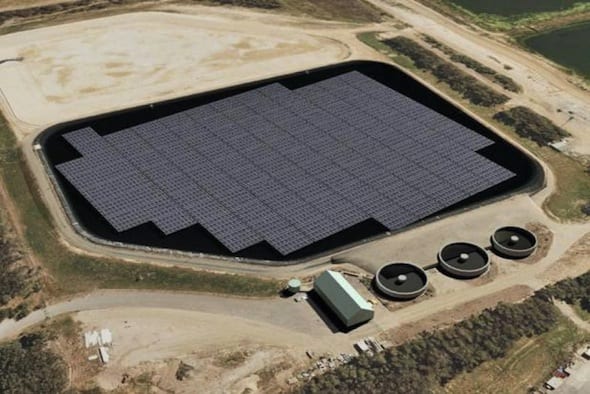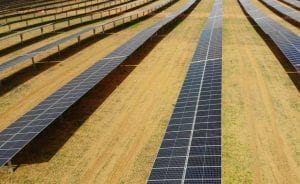Australia could have its first floating solar power plant within months, with construction set to begin on a PV array that will be installed on top of a wastewater treatment facility in Jamestown, South Australia.
The company behind the project, Infratech Industries, said construction of the plant was about to get underway, much of which would be done offsite and slotted together at the Jamestown facility, eventually covering up to 90 per cent of the water’s surface.
“We should see some plant on the site within about two weeks,” an Infratech spokesperson, Felicia Whiting, told ABC News.

Once completed – it could be operational by early April – the Jamestown floating solar plant is expected to produce more than enough energy to power the wastewater treatment facility, with excess power to be exported for use by the township.
With a focus on power, water and waste technology, Infratech was established nearly three years ago in Australia and Singapore and opened a US office in April 2013.
According to the company website, the Northern Areas Council – itself based in Jamestown – was Infratech’s first customer in 2013-14, when it commissioned a 3.5MW floating solar power plant.
Whiting says Infratech has developed floating solar power plants in countries including France and South Korea, but these had essentially acted as test sites for the new and improved model planned for South Australia.
“The plants that we had operating overseas were really behind the meter and not at the utility level and certainly didn’t have some of the sophistication,” Whiting said.
One of the advantages of floating solar panels is that they are kept cool by the water mass, making them about 57 per cent more efficient than land-based solar panels.
It also prevents water evaporation up to 90 per cent of the surface area covered – an important water saving measure – and prevents the outbreak of blue-green algae by keeping the surface water cool; an important water quality issue for for treated wastewater.
“By preventing photosynthesis, the energy from the sun goes into the panel rather than into the water,” said Whiting.
“The water treatment plants are heavy uses of power for the actual water treatments and pumping,”
“Quite sustainably, with no additional use of land, we can use the water surface to power the water treatment facility.
“In addition to that, because we’re so efficient, we’re able to export power to the township.”
Once operational, Whiting said the plant would become Infratech’s showpiece for export around the world.
“We’ve invested our whole research and development program in this technology over the past two years in South Australia,” she said.
“We have other councils waiting to have a look at this and see how it might be adapted to a water basin or a community wastewater management scheme.
“The fact that we are using Australian engineering and it’s an Australian supply chain – that will be taken internationally.”








